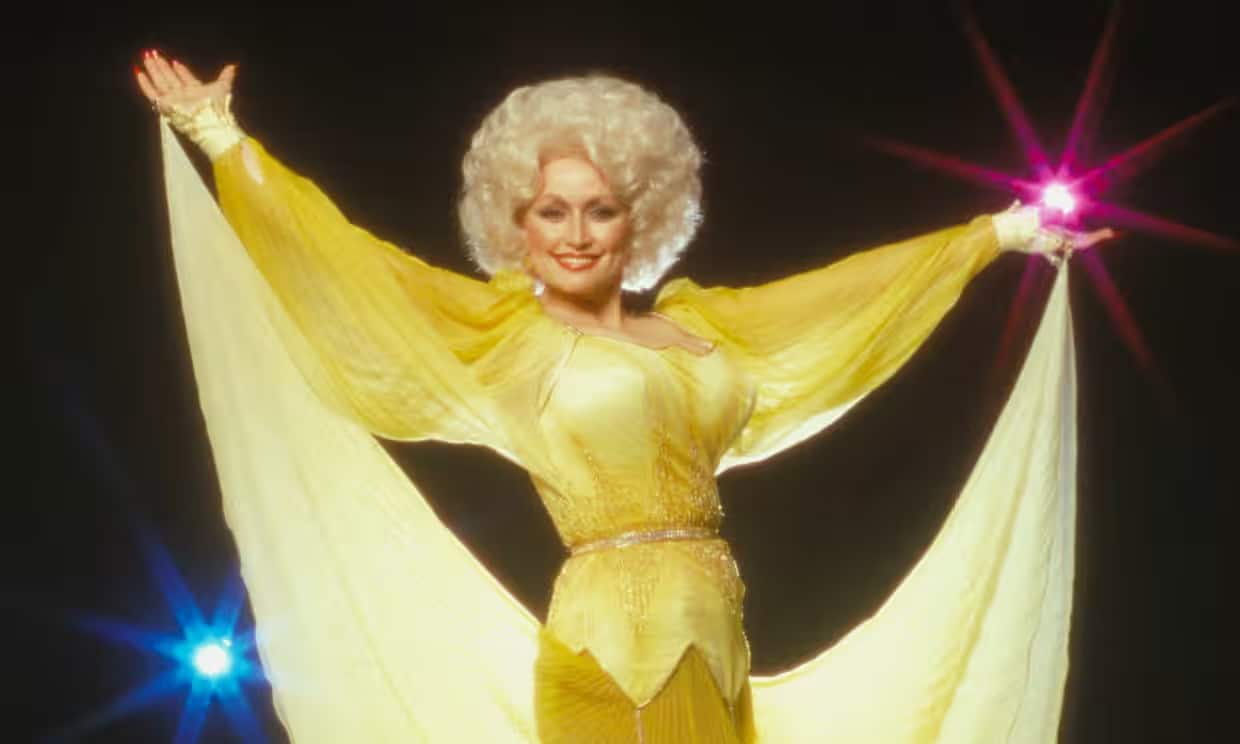When performing “Let It Be,” Paul McCartney, Ringo Starr, and Dolly Parton were joined by Mick Fleetwood on drums and Peter Frampton on guitar. Dolly Parton has also worked with a distinguished group of musicians, including the renowned Elton John, Debbie Harry, Stevie Nicks, Joan Jett, and Rob Halford from Judas Priest.
Surprisingly, modern musicians like Lizzo joined the established music icons on stage to perform “Stairway to Heaven.” It was a big honor for her to be inducted into the Rock and Roll Hall of Fame, but at first, she didn’t think she was a rock artist; therefore, she didn’t think she deserved it. At the age of 77, Dolly Parton became a rock star, and this extraordinary endeavor, her 49th album, “Rockstar,” was inspired by that turning point.
Dolly Parton’s eclectic fashion choices made the Dolly Parton she is
Along with a new CD, Dolly Parton will soon publish a book titled “Behind the Seams: My Life in Rhinestones.” With a focus on her eccentric fashion choices and costumes, this book provides a fascinating look into her life and career. She talks about her long journey and how she’s worn unusual clothing and had dramatic hairstyles. She occasionally questions her past decisions, “What was I thinking?”
She now chuckles about it, but the book offers a fantastic retrospective, tracing her fashion evolution from the homemade outfits she wore as a youngster made from sacks to her renowned “coat of many colors” made by her mother from fabric scraps, right up to the most extravagant and rhinestone-studded stage costumes.
Think blond hair that simply keeps growing, colorful jumpsuits, and gowns covered in countless gems and pearls.

Even as a young child, Dolly Parton had a distinct sense of her particular style. She frequently claims that the “town tramp,” a local woman who left an impression on her during her travels to the town, was the inspiration for her sense of style. She was noted for donning flashy clothing, tight skirts, and high heels.
With her bright red lipstick, long red fingernails, high heels with plastic goldfish in the heels, short skirts, and low-cut shirts, Parton thought she was stunning. Even when others called her “nothing but trash,” Parton would always retort, “Well, that’s what I’m going to be when I grow up.”
Dolly Parton’s struggles with men and the “man” she can be
Dolly Parton probably experienced harassment at some point in her life. She says she is aware of this and adds that she has always been able to express herself and set boundaries with guys without offending them. She claimed to be as physically powerful as a boy, with the ability to push someone away and get out of awkward circumstances if necessary. She knows “how to push you off and get away from you.”
Dolly Parton is upfront about having to deal with unwanted attempts in both her personal and professional lives. She is also aware of the profoundly unpleasant fact that some women encounter far more violent and unsettling circumstances. She feels sympathy for individuals who might not be as capable of defending themselves in such circumstances.
Dolly Parton has often declined to identify as a feminist even though many aspects of her life are in line with feminist ideals. These characteristics include her fierce independence, her keen awareness of the difficulties women face (as demonstrated by her 1968 song “Just Because I’m a Woman,” which addresses double standards), her remarkable self-made success, her prominent role in the 1980 movie “9 to 5,” and her composition of the film’s theme song, which became a political anthem supporting working women.
Dolly Parton hesitates to embrace the term “feminist” since she thinks that words and labels have definite connotations. To her, the phrase frequently conjures images of women who are hostile toward males or who have endured severe mistreatment that motivates them to express their concerns.
Instead, she highlights her steadfast dedication to every person and promotes gender-neutral equality, love, and empowerment to inspire and support everyone.


